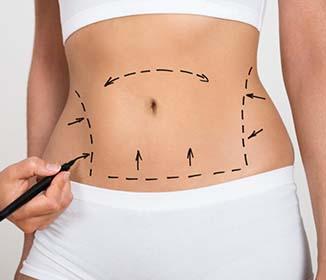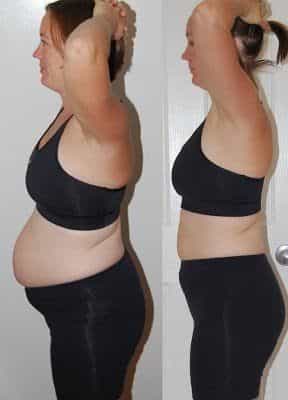When it comes to achieving a slimmer and more toned physique, many people turn to cosmetic procedures like liposuction and CoolSculpting. Both procedures offer a way to remove unwanted fat from specific areas of the body, but they differ in their approach and their pros and cons. In this article, we will compare liposuction and CoolSculpting, so you can choose the right procedure for your needs.

What is Liposuction?
Liposuction is a surgical procedure that involves removing fat deposits from specific areas of the body. The procedure is performed by a plastic surgeon and requires anesthesia. During the procedure, the surgeon makes small incisions in the skin and uses a thin tube called a cannula to suction out the fat. Liposuction can be used to remove fat from areas like the abdomen, thighs, hips, arms, and back.
Pros of Liposuction:
- Liposuction is a highly effective way to remove large amounts of fat from specific areas of the body.
- The results of liposuction are immediate and long-lasting.
- Liposuction can be used to create more defined contours and improve overall body shape.
Cons of Liposuction:
- Liposuction is a surgical procedure, which means it carries risks like infection, bleeding, and anesthesia complications.
- Liposuction can be expensive, with costs ranging from $2,000 to $10,000 depending on the extent of the procedure.
- Recovery from liposuction can take several weeks and may involve discomfort, swelling, and bruising.
What is CoolSculpting?
CoolSculpting is a non-surgical procedure that uses cold temperatures to freeze and destroy fat cells. The procedure is performed by a licensed practitioner and does not require anesthesia. During the procedure, a device is placed on the skin, which applies controlled cooling to the targeted area. The fat cells are then destroyed and naturally eliminated by the body over the following weeks and months.
Pros of CoolSculpting:
- CoolSculpting is a non-invasive procedure, which means it carries fewer risks than surgery.
- CoolSculpting requires no downtime or recovery, so you can return to your normal activities immediately.
- CoolSculpting can be less expensive than liposuction, with costs ranging from $750 to $1,500 per session.
Cons of CoolSculpting:
- CoolSculpting is not as effective as liposuction for removing large amounts of fat or creating dramatic changes in body shape.
- CoolSculpting can be uncomfortable during the procedure, as well as during the following days as the body eliminates the destroyed fat cells.
- Multiple sessions of CoolSculpting may be required to achieve the desired results.
Choosing the Right Procedure:
When choosing between liposuction and CoolSculpting, there are several factors to consider. These include:
- The amount of fat you want to remove
- The areas of the body you want to target
- Your budget
- Your tolerance for surgery and recovery time
If you have a significant amount of fat to remove or want to make dramatic changes to your body shape, liposuction may be the best option. However, if you have smaller pockets of fat that you want to eliminate without surgery or downtime, CoolSculpting may be the better choice.
Regardless of which procedure you choose, it’s important to work with a qualified and experienced practitioner. They can help you understand the risks and benefits of each procedure and help you choose the best approach for your individual needs.
In conclusion, both liposuction and CoolSculpting offer ways to remove unwanted fat from the body, but they differ in their approach and their pros and cons. Liposuction is a surgical procedure that involves removing fat deposits from specific areas of the body. It is highly effective at removing large amounts of fat and creating more defined contours, but it carries risks and requires a longer recovery time.
On the other hand, CoolSculpting is a non-surgical procedure that uses controlled cooling to freeze and destroy fat cells. It is less invasive, requires no downtime or recovery, and can be less expensive than liposuction, but it may not be as effective for removing large amounts of fat or creating dramatic changes in body shape.
Ultimately, the choice between liposuction and CoolSculpting comes down to your individual needs, goals, and preferences. It’s important to do your research, consult with qualified practitioners, and weigh the pros and cons of each procedure before making a decision. By taking the time to understand your options and choosing the right procedure for your needs, you can achieve the slimmer, more toned physique you desire.
FAQ:
Q: What is the difference between liposuction and CoolSculpting?
A: Liposuction is a surgical procedure that involves the removal of fat through a cannula, while CoolSculpting is a non-invasive procedure that uses cold temperatures to freeze and eliminate fat cells.
Q: Is CoolSculpting safe?
A: Yes, CoolSculpting is generally considered a safe procedure. It is FDA-approved and has been found to be effective in reducing fat in targeted areas of the body.
Q: Is liposuction painful?
A: Liposuction is a surgical procedure, and like any surgery, there is the potential for pain and discomfort. However, patients are typically given anesthesia to manage any pain during the procedure.
Q: Can I lose weight with CoolSculpting or liposuction?
A: While both procedures can help remove excess fat from targeted areas of the body, they are not intended for weight loss. They are designed to contour and shape the body by removing small areas of stubborn fat.
Q: How long does it take to see results from liposuction or CoolSculpting?
A: Results from liposuction are typically visible within a few weeks, but it can take several months to see the final results. Results from CoolSculpting may take longer to appear, with the full results being visible after several months.
 Weight Loss College
Weight Loss College






